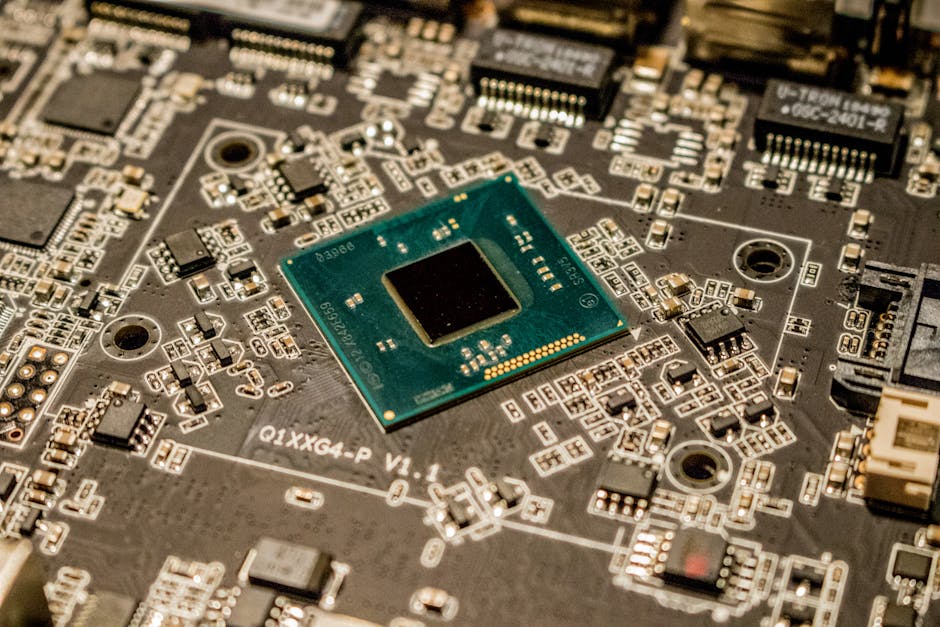Tools for Industrial Computing and Robotics: Integrate Smart Manufacturing
Step into any modern factory or production floor, and you'll notice a distinct shift from traditional manual processes to systems brimming with automation, data connectivity, and robotics. The driving force behind this transformation? Industrial computing and robotics tools that are reshaping how manufacturing operates.

But What makes these tools tick, and how can they truly integrate smart manufacturing into an industry that’s no stranger to change?
Understanding Industrial Computing: The Brains Behind the Operation
Think of industrial computing as the control tower of a busy airport. It's where decisions are made, data is processed, and coordination happens to ensure everything runs like clockwork. Unlike regular computing systems, industrial computers are designed to handle extreme environments – think heat, dust, vibrations, and more.
At its core, industrial computing involves ruggedized hardware paired with advanced software solutions. Take programmable logic controllers (PLCs), which have been used in manufacturing for decades to automate tasks like controlling conveyor belts or monitoring assembly lines. These devices may seem simple on the surface but pack a punch when integrated with modern IoT (Internet of Things) platforms.
A concrete example? Imagine a food processing plant where temperature control is vital. Sensors connected to an industrial computer monitor real-time data and automatically adjust cooling systems when temperatures deviate from the desired range. This eliminates human error, boosts efficiency, and ensures product quality.
The Role of Robotics in Modern Manufacturing
When most people hear "robotics," their minds jump to images of humanoid robots or futuristic machines with blinking lights. While entertaining, this isn't exactly what robotics in manufacturing looks like. Robots in factories are often purpose-built machines designed for specific tasks – welding car parts, assembling electronics, or even packaging products.
Collaborative robots (or cobots) deserve special mention here. Unlike traditional robots that operate in isolated zones for safety reasons, cobots are designed to work side by side with human workers. Picture an automotive assembly line where a cobot assists a technician in installing heavy parts, reducing strain and speeding up production without sacrificing precision.
One notable application is Amazon's use of robotics in its fulfillment centers. Automated guided vehicles (AGVs) transport shelves of products directly to workers for order picking, significantly reducing walking time and increasing efficiency. This blend of human expertise with robotic precision is redefining productivity across industries.
Smart Manufacturing: The Glue That Binds It All
Smart manufacturing isn’t just about using fancy gadgets; it's about creating a seamless ecosystem where machines, computers, and humans communicate effectively. Central to this idea is the concept of "cyber-physical systems," which combine physical machinery with digital networks to create a connected factory floor.
Consider predictive maintenance – a process where sensors monitor equipment health and alert technicians before breakdowns occur. Instead of waiting for a machine to fail (and halting production), manufacturers can proactively address issues using data insights provided by industrial computing systems.
Another shining example comes from Bosch’s smart factories. By integrating robotics with IoT-enabled devices and machine learning algorithms, Bosch has managed to cut energy consumption by up to 25%. This level of optimization doesn’t just save costs; it reduces environmental impact too.
Key Tools Powering Smart Factories
So what tools are at the heart of this manufacturing revolution? Here’s a closer look:
- SCADA Systems: Supervisory Control and Data Acquisition (SCADA) systems provide real-time monitoring and control over factory operations. They’re often paired with IoT sensors for enhanced visibility.
- Industrial IoT Platforms: Platforms like Siemens MindSphere or GE’s Predix collect data from connected devices across the factory floor and turn it into actionable insights.
- Advanced Robotics: From autonomous mobile robots (AMRs) that navigate warehouses independently to robotic arms performing delicate operations, advanced robotics are a cornerstone of smart manufacturing.
- Edge Computing Devices: Edge devices process data locally instead of sending it to remote servers. This reduces latency and ensures faster decision-making on the factory floor.
- Additive Manufacturing: Commonly known as 3D printing, this technology allows manufacturers to create prototypes or components on-demand without the need for traditional molds or tooling.
The Human Element: Why It Still Matters
No matter how advanced machines become, humans remain an integral part of the equation. After all, someone needs to design these systems, analyze the data they generate, and make informed decisions based on insights provided by industrial computing tools.
This brings us to another important point: training and upskilling workers for smart manufacturing roles. It’s not just about knowing how to operate machines anymore – today’s workforce needs a solid understanding of data analytics, programming basics, and even cybersecurity principles.
A practical example can be found in Siemens’ apprenticeship programs that teach workers how to manage digital twin simulations – virtual replicas of physical assets used for testing processes before implementing them in real life. This kind of knowledge ensures employees remain relevant in an increasingly automated world while improving overall operational efficiency.
The interplay between industrial computing, robotics, and smart manufacturing isn’t just transforming factories; it’s redefining what’s possible within production environments globally. From predictive maintenance powered by AI algorithms to collaborative robots working alongside humans on assembly lines – these technologies don’t merely replace traditional methods; they enhance them.
The road ahead might seem daunting at first glance but consider this: every small step toward integrating these tools into your business brings tangible benefits – be it reduced costs through automation or improved product quality via real-time monitoring systems.
If you’re looking to stay ahead in manufacturing or simply curious about what drives modern factories forward – pay attention not just to cutting-edge technologies themselves but also their practical applications across various industries worldwide.
